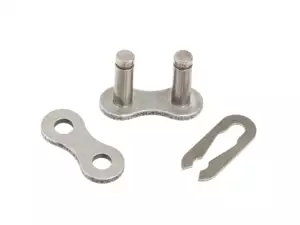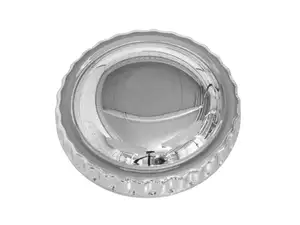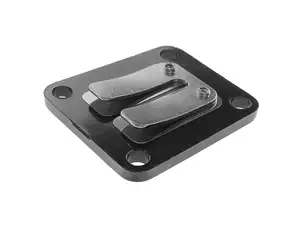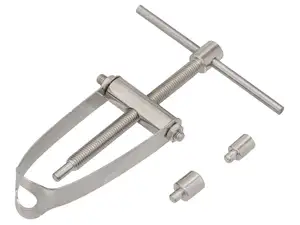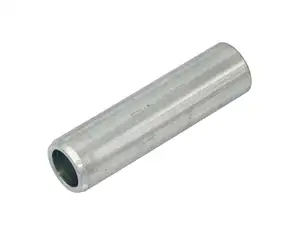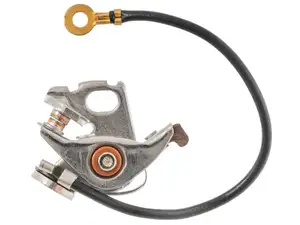
TOMOS
Tomos - more than Puch replicas
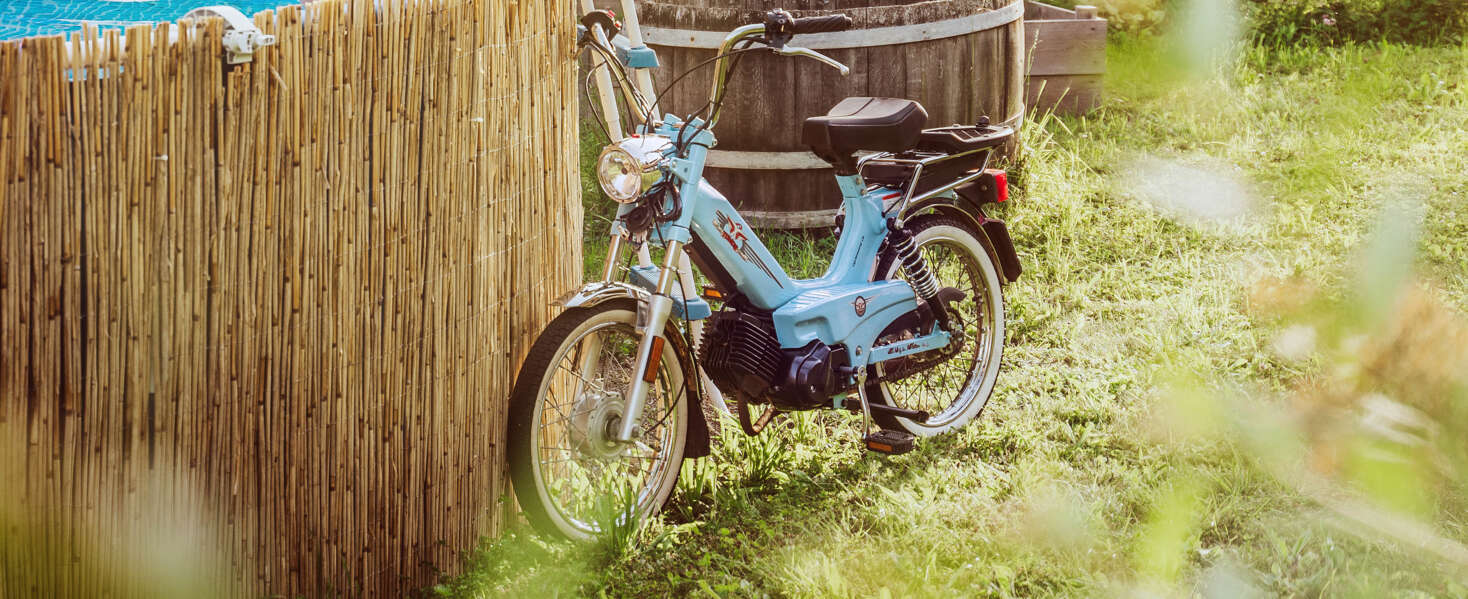
Tomos is a very special moped manufacturer for a number of reasons. It is one of the few Eastern European vehicle manufacturers that exported its mopeds very successfully to Western countries even during the Cold War. The manufacturer also proved to have staying power when it came to moped production. Until a few years ago, the Slovenian manufacturer was still in business building mopeds. Even if the more recent moped models such as the Tomos A35 Sprint, which was built until 2009, are a source of controversy, the manufacturer's older two-wheelers - such as the Tomos XL 25 moped - are appreciated and sometimes even adored by moped enthusiasts. And not just because the XL 25 moped looks confusingly similar to another motorbike legend. We take a closer look at the manufacturer and its most beautiful models.
| Seat |  |
| Status | |
| Foundation | 1954 |

Foundation under the auspices of a socialist planned economy
Tovarna Motornih Vozil Sežana, or the Sežana motor vehicle factory, was founded in 1954 in that very same Slovenian town. As Slovenia was still part of the Socialist Federal Republic of Yugoslavia (SFR) at the time, the company was founded in a different way to what we know from Switzerland and today. Formally, it was a state-owned company that was to produce automobiles and motorised two-wheelers for the Yugoslavian market in the initially state-controlled planned economy.

Breaker with cable (Budget) | Bosch / Ducati
Manufacturer: Quenching · Material: Steel · Ø axle: 4 mm · Ø mounting hole: 4.5 mm · Cable available: Yes · Number of fixing points: 1 pcs · Area of application: Original · Area of application: Standard · Cable length: 100 mm · Ø Internal flywheel: 90 mm · BOSCH OEM number: 1 217 013 025 · BERU OEM number: 0 340 100 710
7,90 EUR
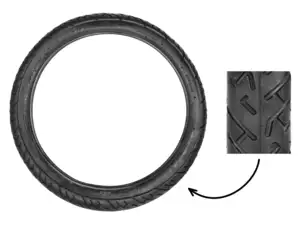
Fortune 2.25 x 17" tires F-854 4 P.R. Semi-Slick
Manufacturer: Fortune · Tire width [inch]: 2.25 " · Tire width [mm]: 57.15 · Width [inch]: 2 1/4 · Color: black · Wheel size [inch]: 17 " · Old designation: 21 x 2.25 · Speed index: J = 100 km/h · Load capacity index: 28 = 100 kg · Profile type: F-854 4 P.R. · Tire type: Semi-slick · White wall: No · Tubeless (yes/no): Tubetype TT (requires hose)
33,70 EUR
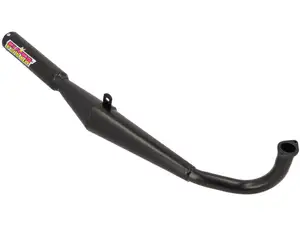
Jamarcol Fuego exhaust 28 mm black | Tomos
Manufacturer: Jamarcol · Material: Steel · Surface: varnished · Color: black · Ø outside: 70 mm · Total length: 770 mm · Ø Silencer: 50 mm · Ø Internal connection: 25 mm · Ø Flame tube outside: 28 mm · Exhaust type: Cone / double cone · Mounting type: Welded lug · Number of fixing points: 1 pcs · Flame tube attachment: Flange
70,90 EUR
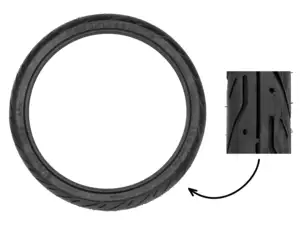
Hutchinson 2.25 x 17" tires semi-slick
Manufacturer: Hutchinson · Tire width [inch]: 2.25 " · Tire width [mm]: 57.15 · Width [inch]: 2 1/4 · Wheel size [inch]: 17 " · Old designation: 21 x 2.25 · Speed index: L = 120 km/h · Profile type: GP1 · Tire type: Semi-slick · White wall: No · Tubeless (yes/no): Tubetype TT (requires hose)
80,00 EUR

Fortune 2.25 x 16" tires F-854 4.P.R. Semi-Slick
Manufacturer: Fortune · Tire width [inch]: 2.25 " · Width [inch]: 2 1/4 · Wheel size [inch]: 16 " · Old designation: 20 x 2.25 · Speed index: J = 100 km/h · Load capacity index: 28 = 100 kg · Profile type: F-854 4.P.R. · Tire type: Semi-slick · Color: black · White wall: No · Tubeless (yes/no): Tubetype TT (requires hose)
29,10 EUR
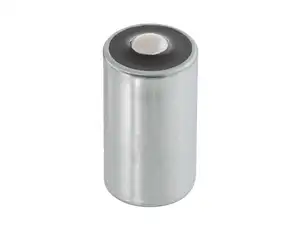
BOSCH capacitor for soldering (high) | Bosch / Ducati
Manufacturer: BOSCH · Ø outside: 18 mm · Height: 32 mm · Mounting type: Plug connection clamped · Connection type: Soldering · Area of application: Original · Area of application: Standard · Puch OEM number: 500 2 50 013 2 · Kreidler OEM number: 08 16 33 · Zündapp OEM number: 277 07 909 · BOSCH OEM number: 1 237 330 037 · Sachs OEM no.: 0 965 091 000
26,20 EUR
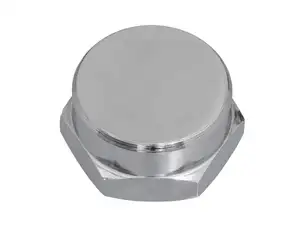
Fork steerer nut M26x1 closed small fork plate chrome
Manufacturer: Quenching · Material: Steel · Surface: chrome-plated · Area of application: Standard · Nut type: Cap nut · Thread type: MF26x1 (fine pitch thread) · Drive: External hexagon · Ø outside: 28.6 mm · Height: 16.3 mm · Thread depth: 8 mm · Width across flats SW: 30 mm
8,60 EUR
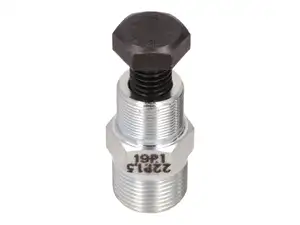
Buzzetti flywheel trigger M22x1.5 / M19x1
Thread type: MF19x1 (fine pitch thread) · Thread type: MF22x1.5 (fine pitch thread) · Width across flats (trigger): 22 mm · Width across flats Screw: 19 mm · Manufacturer: Buzzetti · Area of application: (Dis)assembly tool · Material: Steel · Surface: galvanized (blue) · Total length: 65 mm
19,40 EUR
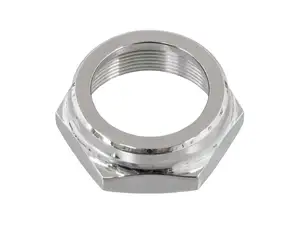
swiing® revival steerer tube nut M26x1 open Stem Inox
Manufacturer: swiing® revival parts · Material: Chrome steel (known as Nirosta®) · Nut type: Union nut · Thread type: MF26x1 (fine pitch thread) · Drive: External hexagon · Ø inside: 21.15 mm · Ø outside: 28.3 mm · Height: 12 mm · Thread depth: 8 mm · Width across flats SW: 30 mm
21,60 EUR
Page 1 of 52
Incidentally, Tomos remained in handsome ownership for a good decade after Slovenia gained independence in 1991 and was privatised very carefully and prudently, which was certainly one of the reasons why the company has survived into the recent past.
Just a few years after the company was founded, production moved to the more conveniently located Slovenian harbour town of Koper. The company initially refrained from developing its own models when realising this project, instead relying on the licensed production of proven models from the West. The Socialist Federal Republic of Yugoslavia owes its special role within the so-called Eastern Bloc to the fact that this was possible at all and that no two-wheeler models or cars had to be manufactured in the socialist brother states, but that is another story. The Slovenian engineers found a licence partner in the automotive sector in the French vehicle manufacturer Citroën, while in the two-wheeler sector the Slovenian Tomos cooperated with none other than the legendary Austrian moped manufacturer Puch. In practice, in the early years this meant that the first two-wheelers assembled in the workshops in Sežana or Koper consisted entirely of parts supplied by the Austrian manufacturer. These were mainly licence replicas of the moped that had been built worldwide for the longest period of time. We are talking about the MS50 model, better known as the ‘Stangl-Puch’.
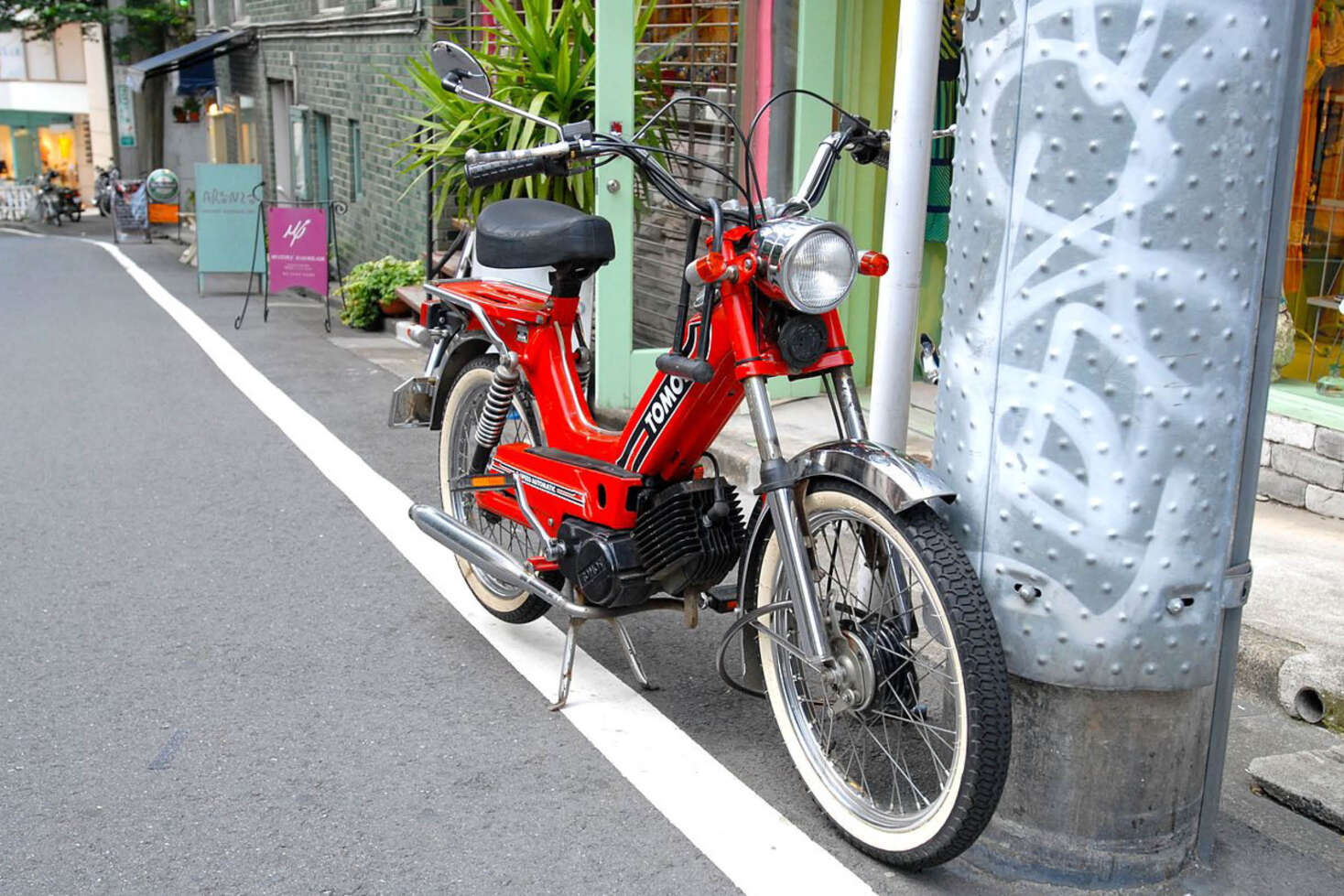
The Slovenian licence construction as a stroke of luck
Incidentally, one should not just turn up one's nose at the vehicle plagiarism practised by the Slovenians. On the one hand, the mopeds were not a sham, but solid and fun to ride, and on the other hand, it is an absolute stroke of luck that the legendary Puch Maxi moped, for example, also has a twin sister from Tomos called the Classic XL 25. This is because, on the one hand, the many spare parts of the various moped brands are logically largely compatible and, on the other hand, the Classic XL 25 mopeds are now available at significantly lower prices. So if you can't afford an original Puch Maxi moped, the Classic XL is often a money-saving alternative, then as now.
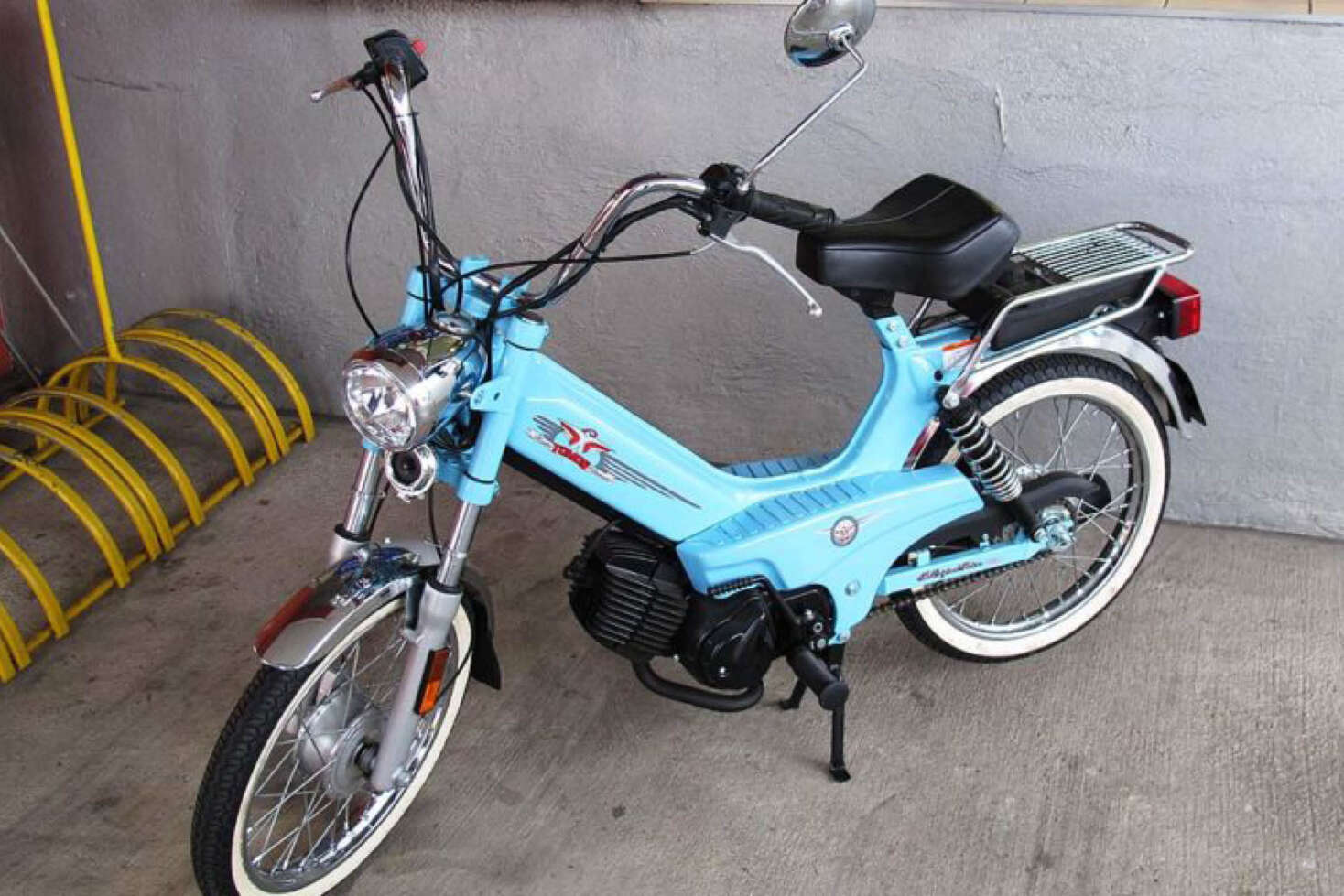
The Colibri model - Sport, Super and Luxury
Soon, however, the Slovenian designers no longer limited themselves to simply screwing together supplied parts and producing licence replicas, but began to develop their own engines and vehicles. The Slovenians made their first mark with the numerous moped models of the Colibri series. Even at first glance, the similarity to the Austrian model, the ‘Stangl-Puch’, is noticeable in all the Colibris, but over time more and more Puch components were replaced by the company's own components on the popular models.
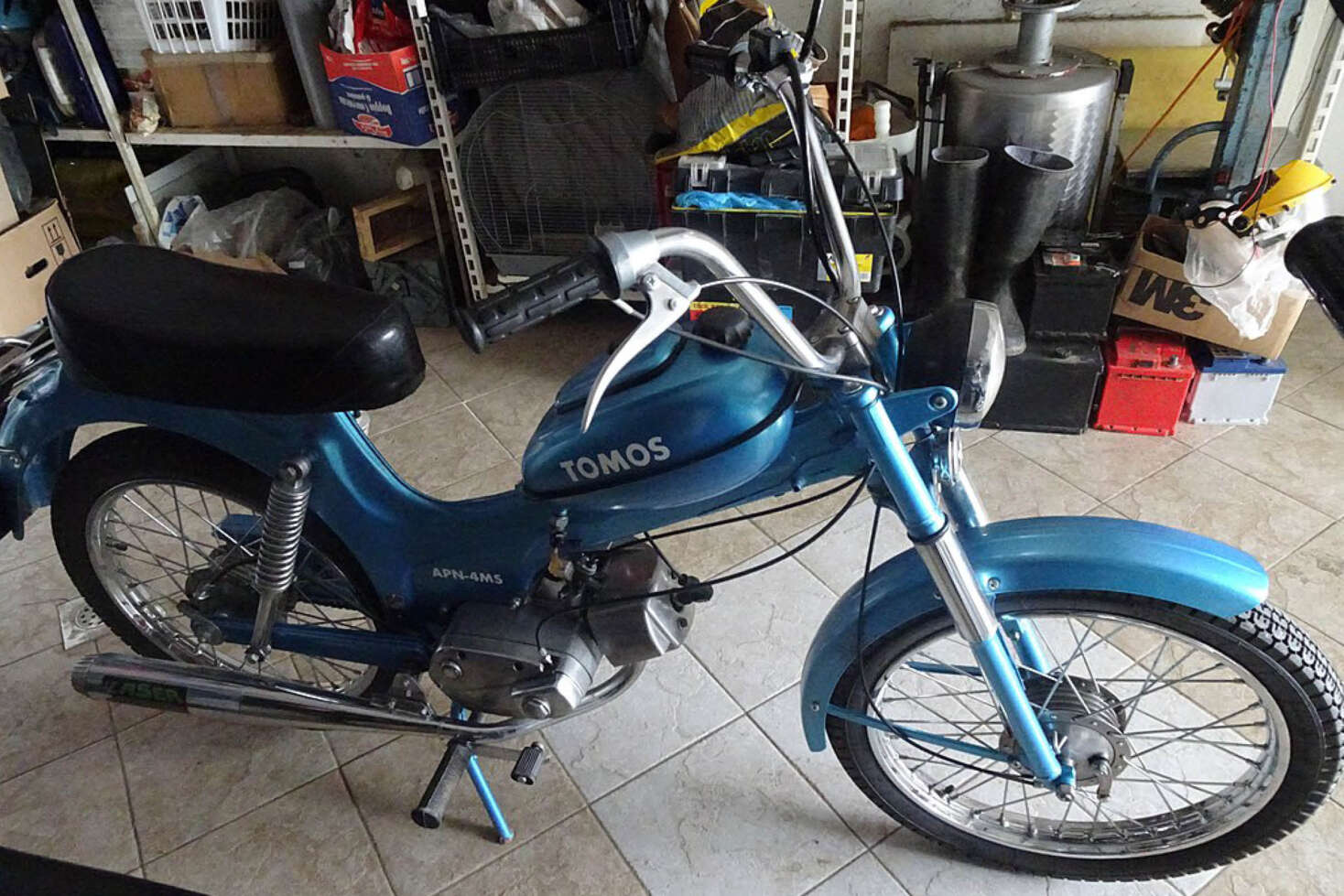
The Colibri model was in great demand. Not only in Yugoslavia did the two-wheeler quickly find friends and sell like hot cakes, it was also exported to Western countries. It all started in Sweden in 1959, and shortly afterwards the first Tomos models were exported to Denmark, where the MS50 clones were sold to the Danish moped lovers under model names such as Sport, Super or Luxus. However, the Netherlands became the most important sales market in capitalist countries abroad. The Slovenian Colibri mopeds were so popular there that Tomos opened its own factory in the Dutch town of Epe as early as 1966. At the time, which was characterised by the confrontation between the Western and Eastern blocs, this was also extremely unusual from a political point of view.
First own constructions in motor construction and independent design
Encouraged by these successes, the engineers and designers at Tomos consistently pursued their chosen path. The declared aim was to become more self-sufficient through further in-house development and innovation and to further reduce dependence on licence partners. But it was a long road and it would be years before Tomos was able to present a moped that had been developed entirely in-house. Initially, the dependence on Puch remained in the light motorbike sector, but a turning point came in the 1970s. While the Colibri models T-03, T-12 and T-13, which were launched on the market at this time, were still equipped with Puch engines, the Colibri moped 14V was the first to use a 2-stroke single-piston engine with backwash and fan cooling developed by Tomos. This unit proved so successful that from 1973 onwards, almost all two-wheelers were equipped with the engines developed in-house.
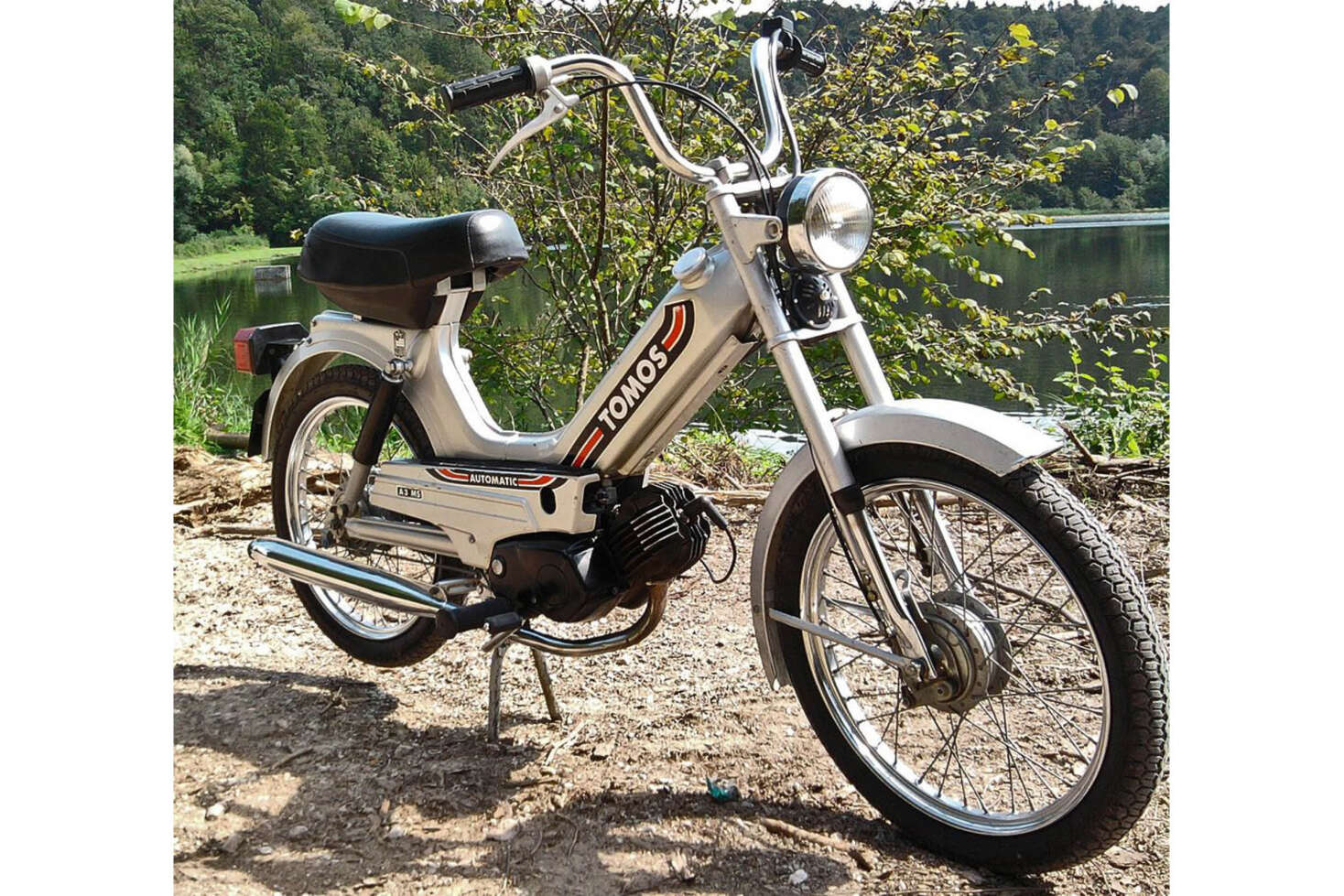
At the same time, the Slovenians quickly recognised how the European two-wheeler market was changing in the 1970s and 1980s. Growing prosperity meant that the over-18 generation at the time also had more money at their disposal to fulfil their desire for individual mobility and freedom. Two-wheelers such as the Tomos-A-OS, A-ON or APN with high handlebars, a seat with backrest and chrome-plated frame parts were offered especially for this target group.
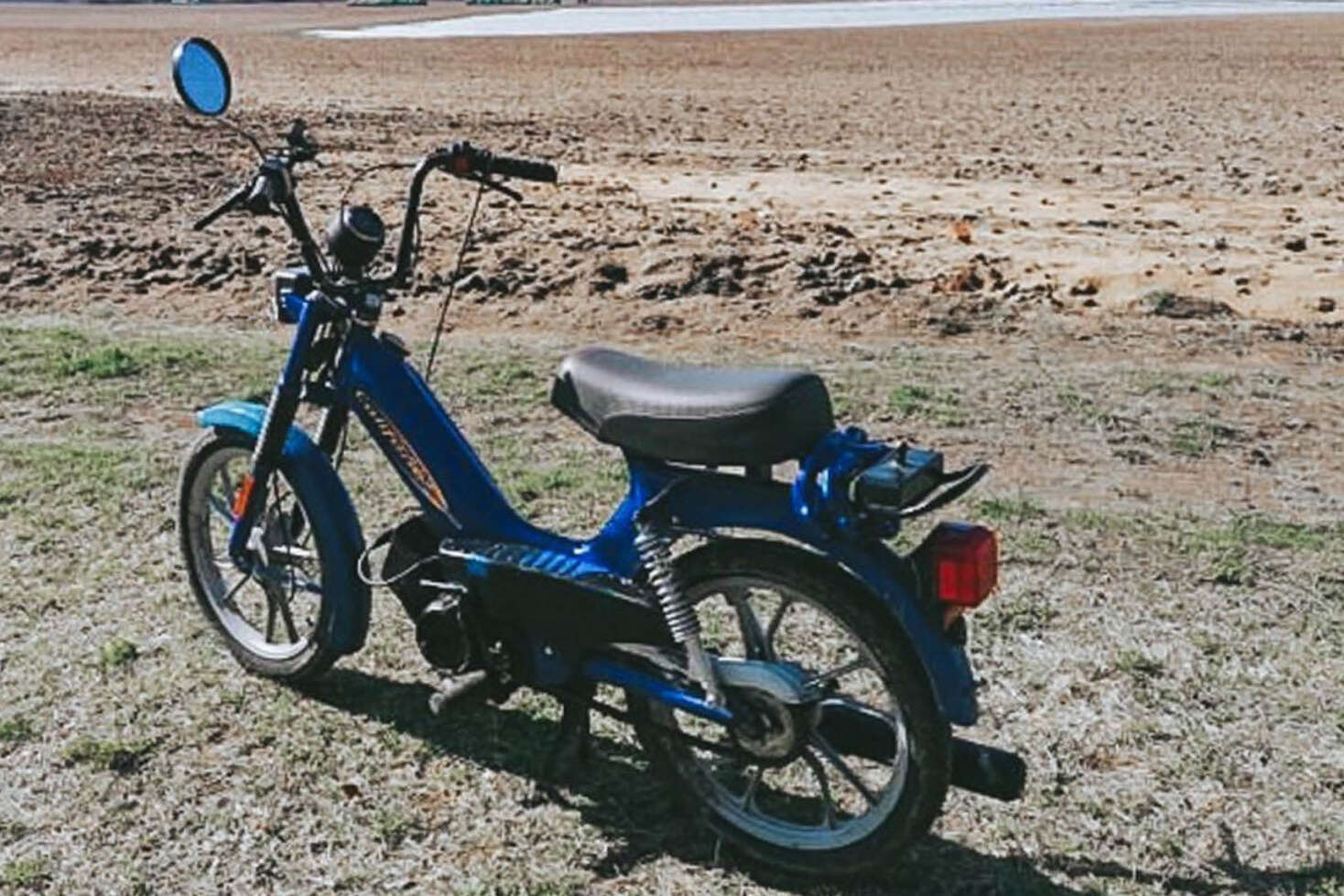
When the moped boom began to fade out in the mid-1980s and moped sales figures plummeted across Europe, many large moped makers turned the spanner and ceased production or sold off their entire moped division. This sad period of decline signalled the end for many traditional manufacturers. But Tomos survived the crisis years. On the one hand, the moped manufacturer owes this to its special status as a state-owned company. However, the sites in Sežana, Epe and Koper had not only been busy building mopeds in recent years, but had also constantly modernised their production facilities and machinery. This enabled the Slovenian manufacturer to cope with the loss of its most important partner company, Puch, and continue producing mopeds. Until 2009, the two-wheelers were still produced at the main plant in the Netherlands, including new developments such as the Sprint moped, the Targa-Perle (ST) and the Targa-LX moped. In order to save production and labour costs, moped production was moved back to the main plant in Koper at the turn of the year 2009/10. Rumours were already causing a stir at the time that Tomos no longer felt up to the competition from Indian and Chinese moped manufacturers and was planning to sell the moped division. However, the company denied a written company statement to this effect that had been circulated. The Slovenian moped manufacturer bravely held on for another decade until the company finally and unfortunately had to file for insolvency in 2019.
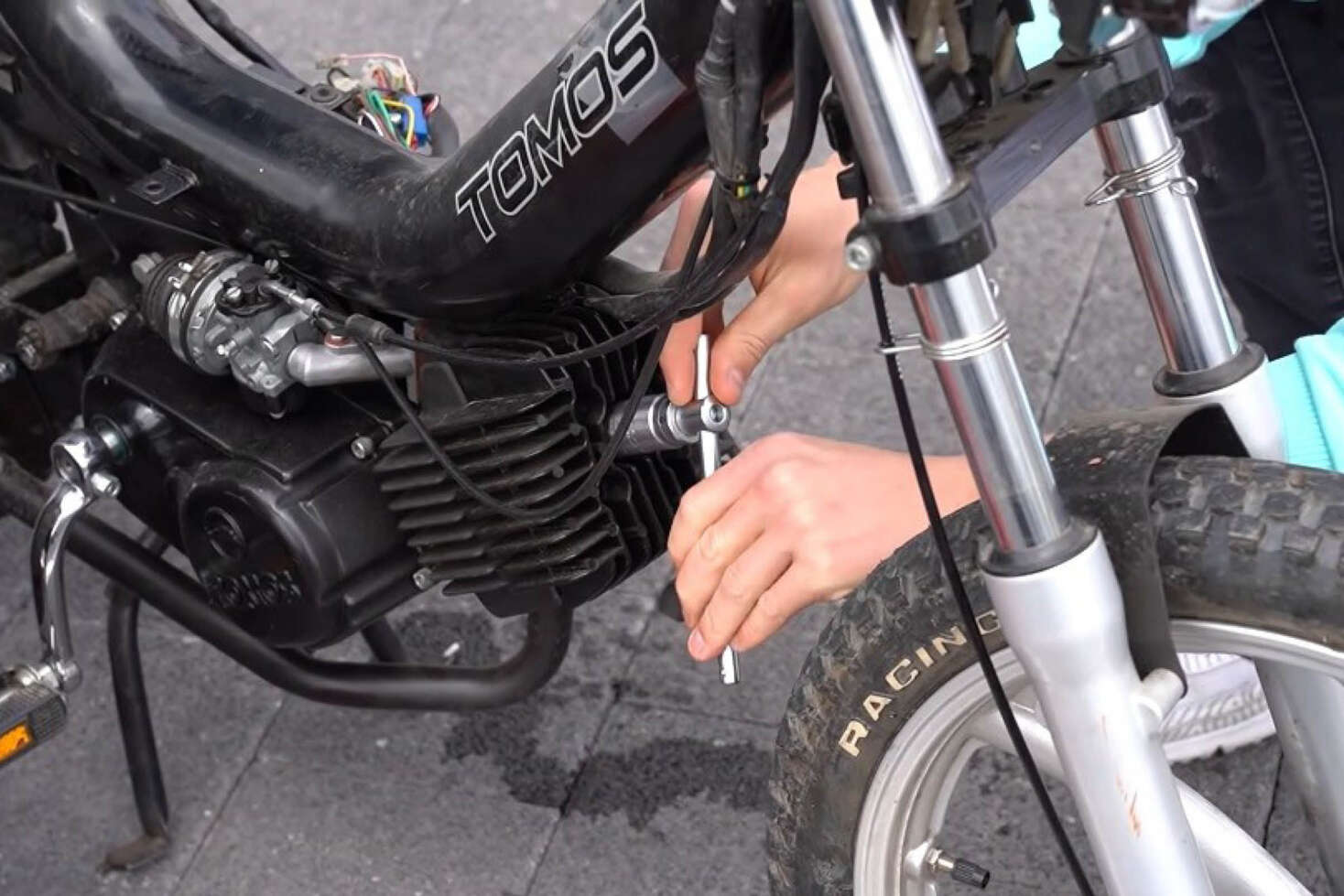
More information on Tomos
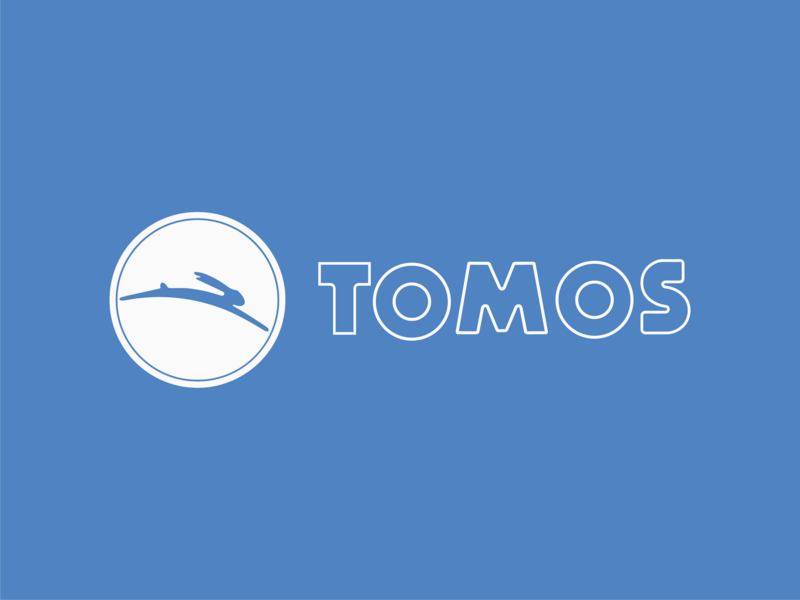
Tomos engine & gearbox

Tomos tuning carburettor & intake
